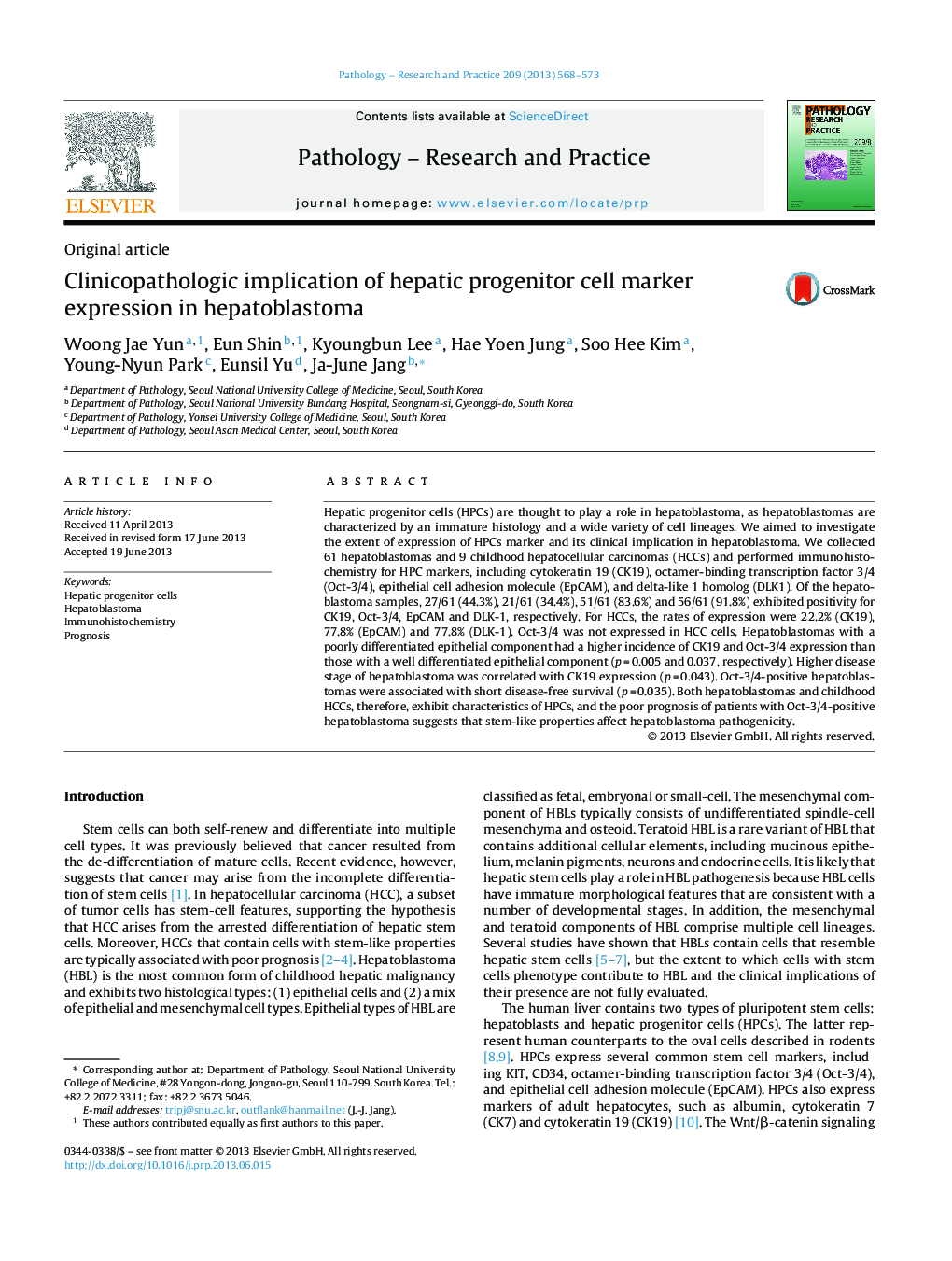| Article ID | Journal | Published Year | Pages | File Type |
|---|---|---|---|---|
| 2155675 | Pathology - Research and Practice | 2013 | 6 Pages |
Abstract
Hepatic progenitor cells (HPCs) are thought to play a role in hepatoblastoma, as hepatoblastomas are characterized by an immature histology and a wide variety of cell lineages. We aimed to investigate the extent of expression of HPCs marker and its clinical implication in hepatoblastoma. We collected 61 hepatoblastomas and 9 childhood hepatocellular carcinomas (HCCs) and performed immunohistochemistry for HPC markers, including cytokeratin 19 (CK19), octamer-binding transcription factor 3/4 (Oct-3/4), epithelial cell adhesion molecule (EpCAM), and delta-like 1 homolog (DLK1). Of the hepatoblastoma samples, 27/61 (44.3%), 21/61 (34.4%), 51/61 (83.6%) and 56/61 (91.8%) exhibited positivity for CK19, Oct-3/4, EpCAM and DLK-1, respectively. For HCCs, the rates of expression were 22.2% (CK19), 77.8% (EpCAM) and 77.8% (DLK-1). Oct-3/4 was not expressed in HCC cells. Hepatoblastomas with a poorly differentiated epithelial component had a higher incidence of CK19 and Oct-3/4 expression than those with a well differentiated epithelial component (p = 0.005 and 0.037, respectively). Higher disease stage of hepatoblastoma was correlated with CK19 expression (p = 0.043). Oct-3/4-positive hepatoblastomas were associated with short disease-free survival (p = 0.035). Both hepatoblastomas and childhood HCCs, therefore, exhibit characteristics of HPCs, and the poor prognosis of patients with Oct-3/4-positive hepatoblastoma suggests that stem-like properties affect hepatoblastoma pathogenicity.
Related Topics
Life Sciences
Biochemistry, Genetics and Molecular Biology
Cancer Research
Authors
Woong Jae Yun, Eun Shin, Kyoungbun Lee, Hae Yoen Jung, Soo Hee Kim, Young-Nyun Park, Eunsil Yu, Ja-June Jang,
